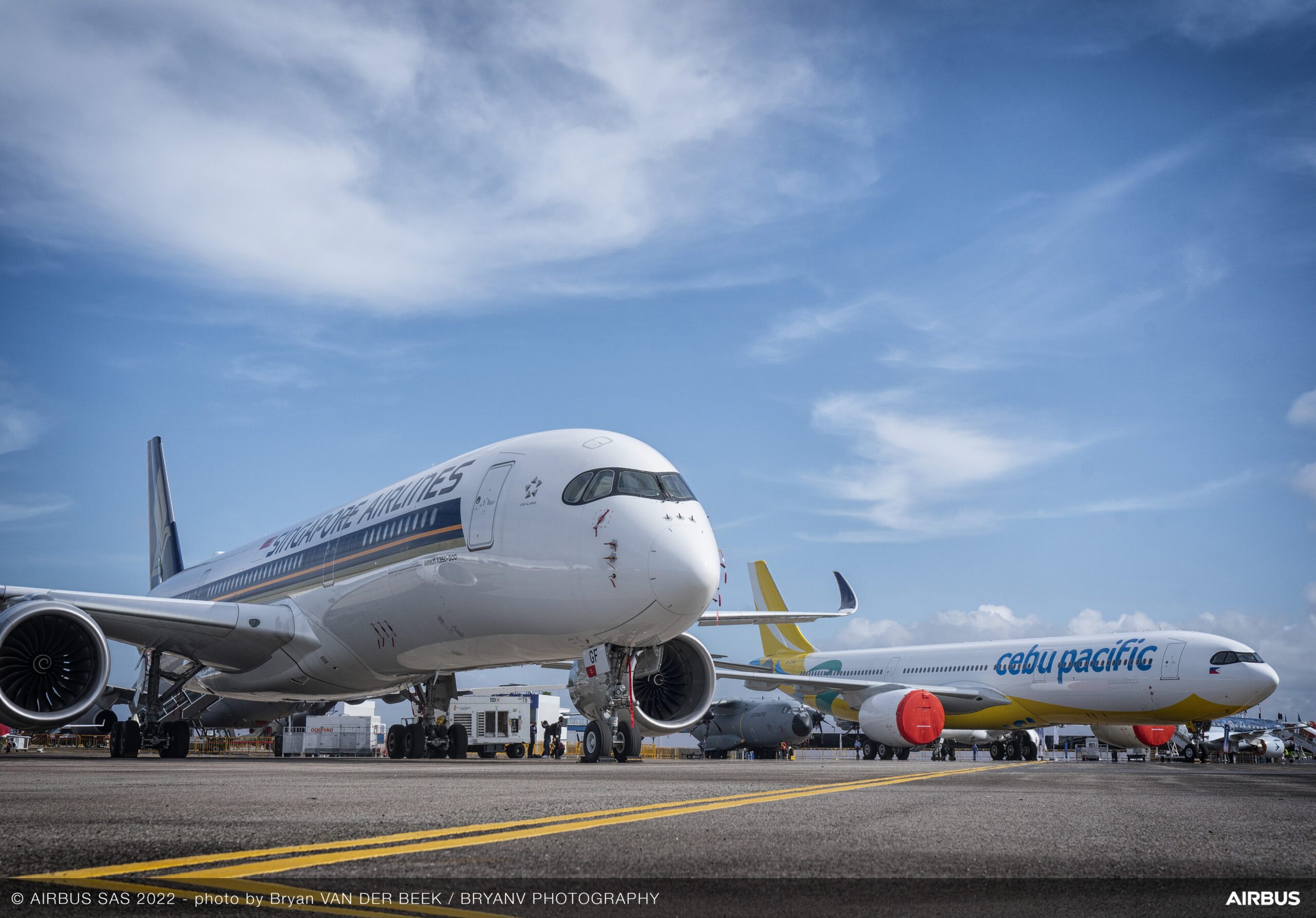
Singapore Airshow 2022 ambiance on static scaled
Airbus targets to deliver 720 aircraft this year, up from 611 in 2021. But getting to this level will be “extremely difficult”, CEO Guillaume Faury said during the 2021 results presentation on February 17. “We need to earn our right to ramp up each month and every single day.” Airbus’ target of 720 deliveries will be “extremely difficult”.
The 2022 target is twenty percent up and comes at a time when there are worldwide supply and logistics issues. Faury acknowledges these problems that include bottlenecks in the supply chain, a shortage of raw materials that result in very high prices, “incredible” logistics issues, and staff shortages due to Covid and the Omicron variant. Yet, Airbus is positive that it will meet its delivery target, partly thanks to recruiting 6.000 new staff this year. This follows on reducing the workforce by almost 5.000 to 126.495 last year.
Faury repeated that Airbus will decide around mid-year about a further ramp-up of the production for the A320neo family to rate 70 or 75 per month from 2024 and beyond. The current rate for the series is 43 per month, but this will go to 65 per month by mid-2023. Going higher is about finding the balance between demand (which is high) and the sustainability of the supply chain. “We don’t want to ramp up for a couple of years and then have to go down again. We are still in the assessment but we are coming closer to a decision”, said Faury.
The A220 rate will go to six per month this year. Airbus Canada has now introduced the new pre-Final Assembly line in Mirabel, where fuselage sections are outfitted before they enter the Final Assembly line. The A350 will go from five to six per month in early 2023, as reported earlier. Chief Financial Officer Dominik Asam said that Airbus has “slightly under” 100 aircraft in its inventory of which most have been placed with customers. “We will have to match the specific customer demand with our manufacturing. That will in this turbulent period still means a high level of inventory, which over time will be worked down over the next two to three years”, Asam said. The majority of this is widebodies.
Full-year profit of 4.2 billion
Airbus Group reported a €4.213 billion full-year profit compared to a €1.133 billion loss in 2020. EBIT Reported was €5.342 billion compared to €-510 million, EBIT Adjusted €4.865 billion versus €1.706 billion. The latter includes a €212 million charge on the A400M military transporter following a review of future deliveries, plus €38 million from a pre-delivery payment mismatch/balance sheet revaluation. A380 termination costs produced a €274 million gain and the disposal of a site in France €122 million. Group revenues were €52.149 billion compared to €49.912 billion in 2020, up because of higher deliveries but offset by a weaker dollar/euro exchange rate.
In Q4, EBIT Reported was €1.905 billion versus €1.675 billion the previous year, EBIT Adjusted €1.496 billion (2020: €1.831 billion), and revenues minus fourteen percent to €16.994 billion.
Commercial Aircraft produced a full-year EBIT Reported of €4.175 billion compared to €-1.330 billion in 2020, reflecting higher deliveries (611) and cost containment. EBIT Adjusted was €3.570 billion versus €618 million. Revenues improved to €36.164 billion from €34.250 billion.
In the fourth quarter, Commercial produced a twenty percent higher EBIT Reported at €1.286 billion but a 34 percent lower EBIT Adjusted at €834 million, while revenues were seventeen percent lower to €11.546 billion.
82 percent backlog is from the A320neo-family
As reported in January, Airbus delivered 611 aircraft in 2021 (566 in 2020), including fifty A220s, 483 A320neo-family, sixteen A330s (including two to Air Belgium on operating lease), 55 A350s, and the final five A380s. The airframer won 771 gross orders or 507 net after cancelations. On January 1, it has 7.082 aircraft on the backlog. Of this, 82 percent is for the A320neo family, with 59 percent alone for the A321neo-family. Faury said that further strengthening the backlog and ramping up the A320 production is “at the heart of our plans”. The Group backlog including Defence and Space, and Helicopters stands at €398 billion.
Research and Development spending was down by four percent to €2.7 billion but this will increase to €2.9 billion again this year as further investments are made in the Digital Design and Manufacturing System (DDMS). This is still some way off of the €3.4 billion in 2019, but CFO Dominik Asam expects to return to this level in a few years’ time. Faury was unwilling to specify how much Airbus is spending on the ZEROe hydrogen program. He confirmed that it is a “significant amount of money” and that recent partnership announcements show that Airbus is serious about this.
High inflation is a worry long-term
Airbus ended 2021 with €7.6 billion in net cash, up from €4.3 billion in 2020, mainly thanks to gross cash flow from operations. The OEM has €6.0 billion available in a revolving credit facility. Financial liabilities stand at €15 billion, including €13.1 billion are long-term. After two years of no dividend, the company intends to pay shareholders €1.50 per share coming April.
In its outlook for 2022, except for its guidance for 720 commercial aircraft deliveries, Airbus expects the Group’s EBIT Adjusted to be €5.5 billion, with free cash flow before mergers and acquisitions and customer financing of €3.5 billion. The forecast is excluding new disruptions both within Airbus and in the outside world, notably new Covid variants and political tensions. One factor that concerns Asam is the level of inflation that comes from increased energy and material prices, especially if levels remain high for a longer period.
Views: 19



